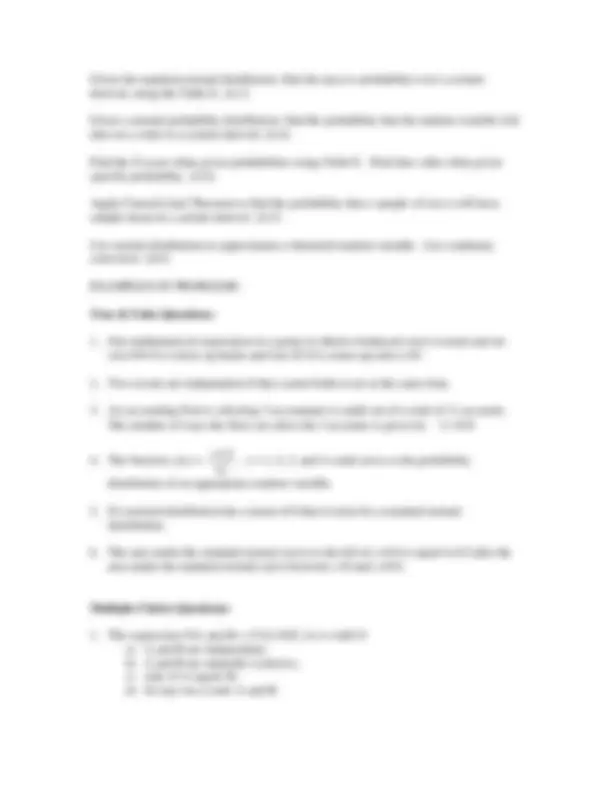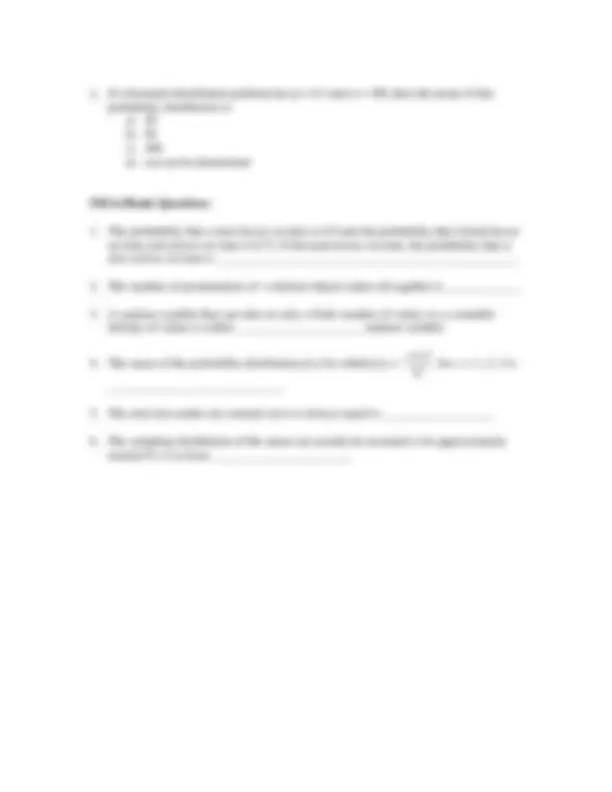




Study with the several resources on Docsity

Earn points by helping other students or get them with a premium plan


Prepare for your exams
Study with the several resources on Docsity

Earn points to download
Earn points by helping other students or get them with a premium plan
Community
Ask the community for help and clear up your study doubts
Discover the best universities in your country according to Docsity users
Free resources
Download our free guides on studying techniques, anxiety management strategies, and thesis advice from Docsity tutors
Material Type: Exam; Class: Introductory Statistics; Subject: Mathematics; University: Marshall ; Term: Fall 2006;
Typology: Exams
1 / 4

This page cannot be seen from the preview
Don't miss anything!



STUDY SHEET for MIDTERM #2 (Wednesday, October 18)
The best way to prepare to the midterm is to read the book and to do the homework exercises. Please, take time to go over the material.
Here is what you have to have an idea about:
Below is the list of typical problems in the most general from which you can expect on the test:
Given a random experiment, find the corresponding sample space. {4.2} Given an event, find its probability by using classical definition of probability. {4.2}
Given an event, find its probability by using empirical definition of probability. {4.2}
Given an event, find the probability of its complement. {4.2}
Given two events, determine whether they are mutually exclusive. {4.3}
Given two events, find the probability that either one of them occur. {4.3}
Given two events, find the probability that both of them occur. {4.4}
Given two events, find the probability of one of them given the other. {4.4}
Given two events, show whether they are independent or not. {4.4}
Use Fundamental Counting Rule to find in how many ways the sequence of n events is completed. {4.5}
Calculate the number of possible arrangements of n distinct objects (Factorial Rule).
Calculate in how many ways r elements can be taken from the set of n distinct elements (repetitions are not allowed). [Permutations if the order is essential] {4.5}
Calculate in how many ways r elements can be taken from the set of n distinct elements (repetitions are not allowed). [Combinations if the order is not essential] {4.5}
Given a function, check if it can serve is a discrete probability distribution for some random variable. {5.2}
Given a discrete probability distribution, find its mean, variance, and standard deviation. {5.3}
Find the expected value of a discrete random variable. {5.3}
Given Binomial distribution random variable, find the probability of a certain event {5.4}
Find the mean and standard deviation of the Binomial distribution. {5.4}
List the properties of a Normal probability distribution. {6.2}
Fill in Blank Questions:
x + 2 , for x = 1, 2, 3 is
_____________________________.